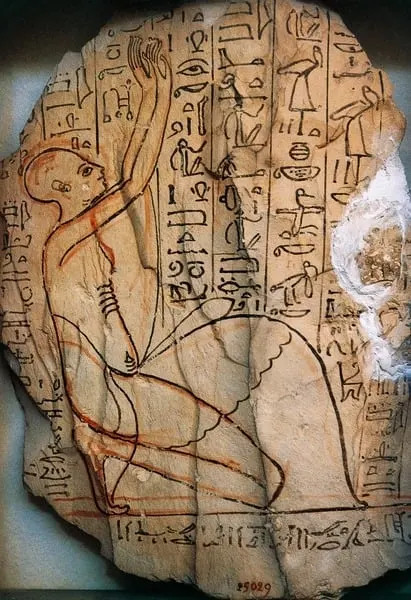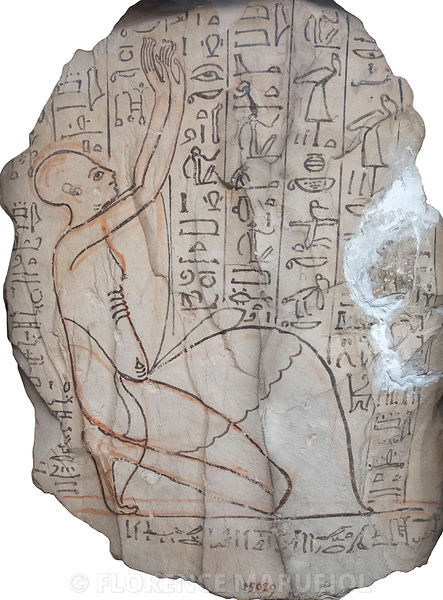Unveiling the Ostracon of a Prayer

In the heart of ancient Egypt, a simple piece of limestone holds a treasure trove of history. Known as the “Ostracon of a Prayer,” this artifact depicts a scribe in prayer, etched onto its rough surface. But what exactly is an ostracon, and why is it so significant?
The Humble Ostracon: Egypt’s Affordable Canvas
Ostraca, derived from the Greek word for potsherd, were fragments of pottery or limestone flakes used by ancient Egyptians as an economical writing surface. Unlike the expensive papyrus, these readily available materials served as canvases for a wide array of purposes:
- Planning work on tombs
- Scribal exercises
- Letters and personal notes
- Bills and inventories
- Literary texts, including love poems and wisdom writings
Beyond Text: A Wealth of Information

The importance of ostraca extends far beyond mere casual scribblings. As Ben Haring notes in “The Survival of Pharaonic Ostraca”:
“Ancient Egyptian ostraca display a wealth of written and pictorial information, the range of which by far exceeds that of papyri, and even that of monuments.”
These fragments were used for both short-term and long-term purposes, including:
- Legal records with entries spanning months
- Literary excerpts deposited in tombs as burial gifts
- Miniature votive stelae kept in homes
The Ostracon of a Prayer: A Glimpse into the Past
Our featured ostracon, dating back to the New Kingdom’s 20th Dynasty (ca. 1189-1077 BC), likely originated from Deir el-Medina. Now housed in the Egyptian Museum in Cairo, this limestone fragment offers a unique glimpse into the religious practices and artistic techniques of ancient Egypt.
As we study this humble yet profound artifact, we’re reminded of the ingenuity and resourcefulness of the ancient Egyptians. The Ostracon of a Prayer stands as a testament to their ability to transform the ordinary into the extraordinary, preserving their thoughts, beliefs, and daily lives for millennia to come.
